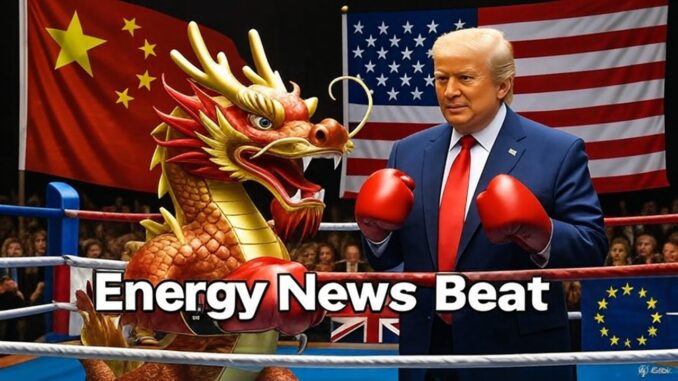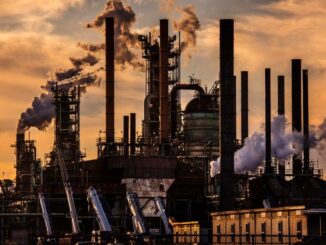
In the escalating trade tensions dubbed the “Trump Tariff Wars,” China finds itself at a pivotal crossroads. For decades, Beijing has navigated the global stage with a dual narrative: projecting itself as a rising superpower domestically while leveraging its “developing country” status abroad to secure subsidies, lower tariffs, and delayed international obligations. This strategy allowed China to flood markets with inexpensive goods, undercutting competitors and fueling its economic ascent. However, as of September 2025, that playbook appears to be unraveling. Premier Li Qiang announced at the United Nations that China will no longer seek special and differential treatment as a developing country in future World Trade Organization (WTO) agreements.
This concession, long demanded by the U.S., marks the end of what many critics called China’s “cheat code” for global dominance.
The shift comes amid intensifying tariffs from major economies, threatening China’s export-driven model. But what does this mean for the world’s largest oil importer? As tariffs squeeze exports and exacerbate domestic economic woes, China’s ability to sustain its voracious appetite for oil—critical for its industries, transportation, and energy security—hangs in the balance. This article examines the key issues, drawing on recent data to assess China’s resilience and its implications for global energy markets.
The End of Special Treatment: Tariffs Bite HardChina’s developing-country status at the WTO provided it with advantages like reduced tariff commitments and longer timelines for compliance with trade rules. This enabled Beijing to maintain lower barriers for its exports while protecting domestic industries. The “scam,” as some Western observers framed it, helped China become the world’s factory, exporting everything from electronics to electric vehicles (EVs).
That era is closing. By the end of 2025, at least 32 countries, including key players in Europe and the U.S., are set to revoke or limit these privileges, according to trade analysts.
Europe has already hiked tariffs on Chinese goods, with duties on EVs jumping from around 10% to as high as 38% in some cases, and retaliatory measures on pork reaching up to 62%.
In the U.S., tariffs on Chinese EVs have doubled to 100%, with additional threats of 100-200% hikes on other imports unless China eases restrictions on rare earths and other commodities.
President Trump has even targeted niche trades like used cooking oil, imposing measures that could disrupt biofuel-related imports, indirectly affecting energy supply chains.
These changes impose hundreds of billions in extra costs on Chinese exporters. The WTO projects a staggering 77% drop in Chinese exports to the U.S. in 2025 alone.
Overall, China’s exports have been sluggish since 2023, marking the first annual decline in seven years with a 5.5% drop to $3.513 trillion.
Analysts forecast another $600 billion collapse over the next three years, driven by weakened demand and higher barriers.
Human and Economic Toll:
From Factory Towns to Social Unrest
Behind the macroeconomic figures are profound human impacts. Approximately 180 million Chinese workers depend on export-oriented manufacturing. As tariffs erode competitiveness, entire industrial hubs are faltering. In Dongguan, once dubbed the “world’s factory,” thousands of export firms have shuttered in 2024, leaving vacant storefronts and decaying industrial parks.
Reports indicate waves of factory “holidays”—temporary shutdowns with wage cuts—affecting sectors from garments to electronics.
Youth unemployment exacerbates the crisis. While Goldman Sachs estimated rates as high as 20.4% in 2023 amid post-pandemic mismatches, recent figures show urban youth (ages 16-24) unemployment at 18.9% in August 2025, spiking as new graduates enter a sluggish job market.
This isn’t mere economic strain; it’s a potential trigger for social unrest, with protests over unpaid wages and factory closures already surfacing in manufacturing belts.
Got Questions on investing in oil and gas? Or do you have a Tax Burden in 2025?
China’s economy has long rested on three pillars: exports, real estate, and debt-fueled investment. Real estate has imploded, with property values plummeting and developers defaulting. Local government debt stands at a colossal 47.5 trillion yuan ($6.6 trillion) as of end-2024, with hidden debts pushing the total augmented figure to around 124% of GDP.
Efforts to refinance, including a 10 trillion yuan initiative, highlight the strain, but Beijing’s “extend and pretend” approach risks prolonged stagnation.
Foreign investors are fleeing. U.S. direct investment in China has halved, while Japanese inflows dropped 60% over the past decade.
Overall foreign direct investment (FDI) plummeted 99% in net terms over three years, hitting a low of $4.5 billion in 2024.
Factories are relocating to Vietnam, India, and Indonesia, accelerating the “China-plus-one” strategy among multinationals.
Premier Li’s September speech wasn’t just about trade; it signaled an admission that the old growth model is obsolete.
China now projects strength outwardly while grappling with internal decay.
The Energy Angle: Can China Keep Buying Oil?
For energy markets, the tariff wars pose an indirect but significant threat to China’s oil demand. As the world’s top crude importer, China consumed about 14.5 million barrels per day in 2024, sourcing primarily from Russia, Saudi Arabia, and Iran. Tariffs don’t directly target oil imports—China even imposed a 10% duty on U.S. crude in retaliation
—but the economic fallout could curb consumption.A slowing economy means reduced industrial activity, transportation needs, and overall energy use. Exports, which account for roughly 20% of GDP, generate the foreign exchange reserves needed to fund oil purchases (mostly in U.S. dollars). With exports projected to crater—U.S.-bound shipments down 33.1% year-on-year in recent months
—reserves may dwindle, pressuring import volumes. Analysts predict China’s oil demand growth could slow to 0.5% in 2025, down from 4% pre-tariff escalation, potentially softening global prices.
Yet, China can still afford to buy oil—for now. Reserves exceed $3 trillion, and Beijing has diversified suppliers, boosting Russian imports by 15% in 2025 amid discounted Urals crude. Strategic stockpiling continues, with imports holding steady at around 11 million bpd through mid-2025.
If domestic stimulus ramps up—such as infrastructure spending to offset export losses—oil demand might even rebound temporarily. The risk lies in prolonged stagnation. If tariffs lead to deflationary pressures and deeper unemployment, consumer spending on fuel could drop. Trump’s threats on ancillary trades, like used cooking oil (down 65% in imports due to tariffs), hint at broader energy disruptions.
For oil producers, this spells volatility: A weaker China could depress Brent crude below $70 per barrel, but any geopolitical pivot—say, toward more self-sufficiency—might stabilize imports.
The Bigger Picture: A Naked Empire?
China’s facade of invincibility is cracking. The tariff wars have exposed vulnerabilities in its export-reliant, debt-laden economy, with ripple effects on global trade and energy. While Beijing pretends strength, the reality is a teetering giant. Will this moment force China to “stand tall” through reforms, or reveal its frailties to the world? For energy stakeholders, the answer hinges on whether China can pivot fast enough to maintain its oil lifeline amid the storm.
The world is changing into two groups. The countries following Net Zero into fiscal collapse and potential regime changes, and those following solid energy policies, where they will not offer subsidies and have low-cost energy for a booming economy. Canada, the UK, and the EU are aligning to buy things from China, and stay on that path, and the rest of the world is realigning into a new trade bloc.
As long as China and India can make up for the deindustrialization of Canada, the UK, and the EU, we will see higher oil prices. With the potential end of the Ukraine war, this may all roll on through.
Got Questions on investing in oil and gas? Or do you have a Tax Burden in 2025?
Crude Oil, LNG, Jet Fuel price quote
ENB Top News
ENB
Energy Dashboard
ENB Podcast
ENB Substack






